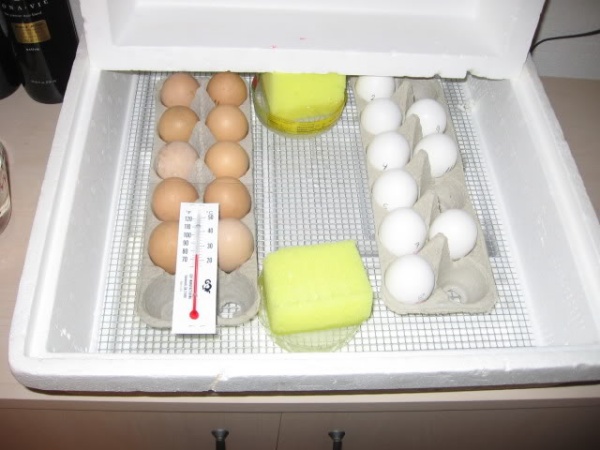
Once the incubator has been cleaned and re-assembled, you will need to test run the incubator for at least 24 hours before you plan to add your eggs. Use a damp towel to wipe down any parts of the incubator that can’t be submerged in water. You will want to wash any waterproof parts in warm water with a splash of white vinegar.

Even if your incubator is brand new, straight out of the box, it is still a good idea to sanitize the incubator before using it to hatch eggs.

#DELAYED CHICKEN EGG HATCHING INCUBATOR WINDOWS#
Avoid Direct Sunlight - keep the incubator away from windows where direct sunlight could heat up the incubator or windy drafts could cool it down.No Drafts - avoid doorways, hallways, or high-traffic areas where constant air flow could cause drafts which will affect the incubator’s ability to maintain a correct temperature.Out of the Way - the incubator should not be in a spot where it will get knocked, bumped, or unplugged during incubation.Easy to Remember - you will need to fill the incubator’s water reservoir throughout incubation to help maintain proper humidity.Before settling on a space, consider the following traits for an ideal incubation room/area: You may already have an area in mind or still remain undecided. Once you have all your incubating supplies, it's time to set up an incubating area.
#DELAYED CHICKEN EGG HATCHING INCUBATOR MANUAL#
No matter what incubator you choose, you should always read its instruction manual so you can get a better understanding of how your make and model operates.

Turning - does the incubator have an automatic turning system or will you need to turn the eggs manually.You should consider these larger factors when choosing an incubator to invest in: Do your own research here, but both versions of incubators can be used to successfully hatch chicks. A still air incubator lacks a fan, relying on passive warm air rising from the bottom to the top of the incubator, eventually escaping out of the ventilation holes. The circulating air helps keep the temperature even throughout the whole incubator. You should also consider if you want to get a forced air incubator or a still air incubator.Ī forced air incubator has a fan installed in it to circulate the air during incubation. Incubator sizes range from small table-top models that hold a dozen eggs to large cabinet style incubators that can hold several dozen eggs. First, decide how many eggs you will want to incubate. When choosing an incubator to invest in, there are several factors you’ll want to consider. Brooder - a brooder should be prepared before your chicks hatch.Shelf Liner - can be used to create a non-slip surface on the bottom of the incubator during hatch time.Egg Scale (optional) - an egg scale is used for monitoring egg weight loss which can help you get the correct humidity levels during incubation (eggs lose weight as moisture evaporates during incubation).Soft Lead Pencil - use a soft lead pencil when marking your hatching eggs so you don’t accidentally puncture the shell.Hydrometer - a small, digital hydrometer can help you monitor humidity levels in the incubator, versions that have a probe that fits into the incubator ventilation holes are especially helpful.



 0 kommentar(er)
0 kommentar(er)
